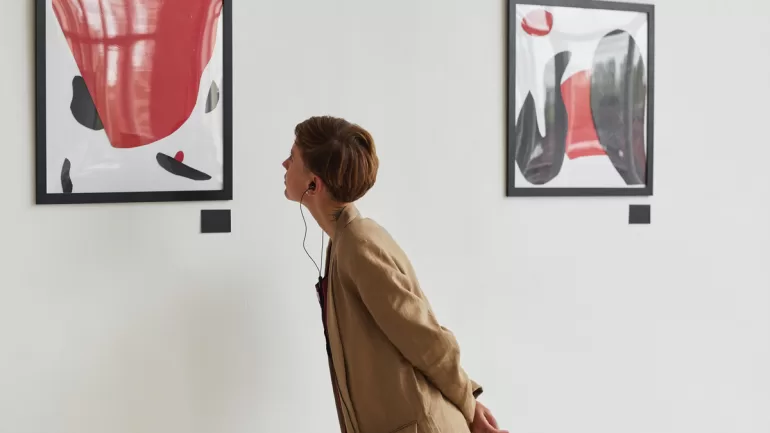ART
Unpack the truth behind modern art myths. These misconceptions about modern art are surprisingly common—but entirely wrong
BY EMMA RADEBOUGH, ARTCENTRON
Misconceptions About Modern Art You Probably Believe
Modern art often sparks polarized reactions. For some people, it’s a captivating exploration of creativity beyond boundaries. For others, it’s just some paint haphazardly applied to a canvas. If you’ve ever rolled your eyes at an abstract painting or thought, “I could do that,” this post is for you. Let’s debunk some of the most common misconceptions about modern art.
Myth 1: Anyone Can Do It
You’ve probably heard someone stand in front of an abstract art piece and mutter, “My toddler could do that.” While much modern art may appear simple, it’s deceptively so. The artists behind these pieces spend years honing their craft, studying composition, color theory, and the emotional impact of their work.
Take Jackson Pollock’s drip paintings as an example. His process wasn’t random. In fact, he was controlling the flow of paint to create dynamic pieces balanced in rhythm, texture, and energy. It’s easy to dismiss something as “simple” when we don’t see the thought and technical skill involved behind the scenes.
Myth 2: It Doesn’t Have Meaning
One of the biggest misconceptions about modern art is that it lacks meaning. It’s understandable why people might think this; the shapes, lines, or blobs of color in a Kandinsky piece, for example, might feel elusive at first glance. However, much of modern art invites viewers to interpret it based on personal experience rather than dictating a fixed meaning.
Take Marcel Duchamp’s famous Fountain (yes, the urinal). It wasn’t created just to confuse people or be outrageous, though that certainly helped its popularity. Duchamp was challenging conventional ideas of what could be considered art. This redefined the boundaries of creativity and started an important conversation about artistic expression, which is clearly meaningful.
Myth 3: Modern Artists Don’t Have Technical Skills
People often compare modern art unfavorably to classical art and assume that artists working with abstract or minimalist styles simply lack technical abilities. This couldn’t be further from the truth.
Consider Pablo Picasso. While he’s best known for his groundbreaking contributions to Cubism, Picasso was classically trained and capable of producing realistic drawings by the age of 14. His decision to move away from traditional representation was a deliberate choice to push artistic boundaries, not a reflection of limited ability.
Moreover, it’s unfair to say that abstract pieces aren’t technically challenging. Modern artists learn about, integrate, and innovate many different abstract art styles to find their unique voice and audience. Just because art doesn’t look like something in the real world does not make its composition less impressive and thoughtful.
Myth 4: It’s Only About Shock Value
Yes, some modern art can be provocative. But shock alone isn’t the point; it’s a tool meant to spark conversations that matter.
Modern art asks us to reconsider our assumptions about society, technology, and even art itself. It challenges norms and pushes audiences to engage on a deeper level, whether that’s discomfort, curiosity, or awe.
See Modern Art Through a New Lens
Now that we’ve debunked these popular misconceptions about modern art, do you feel differently about it? We hope you at least can learn to appreciate the intentionality of it, even if you still don’t appreciate the art itself. Just remember this: if a piece makes you stop, look, and think, then that art is, on some level, meaningful.
